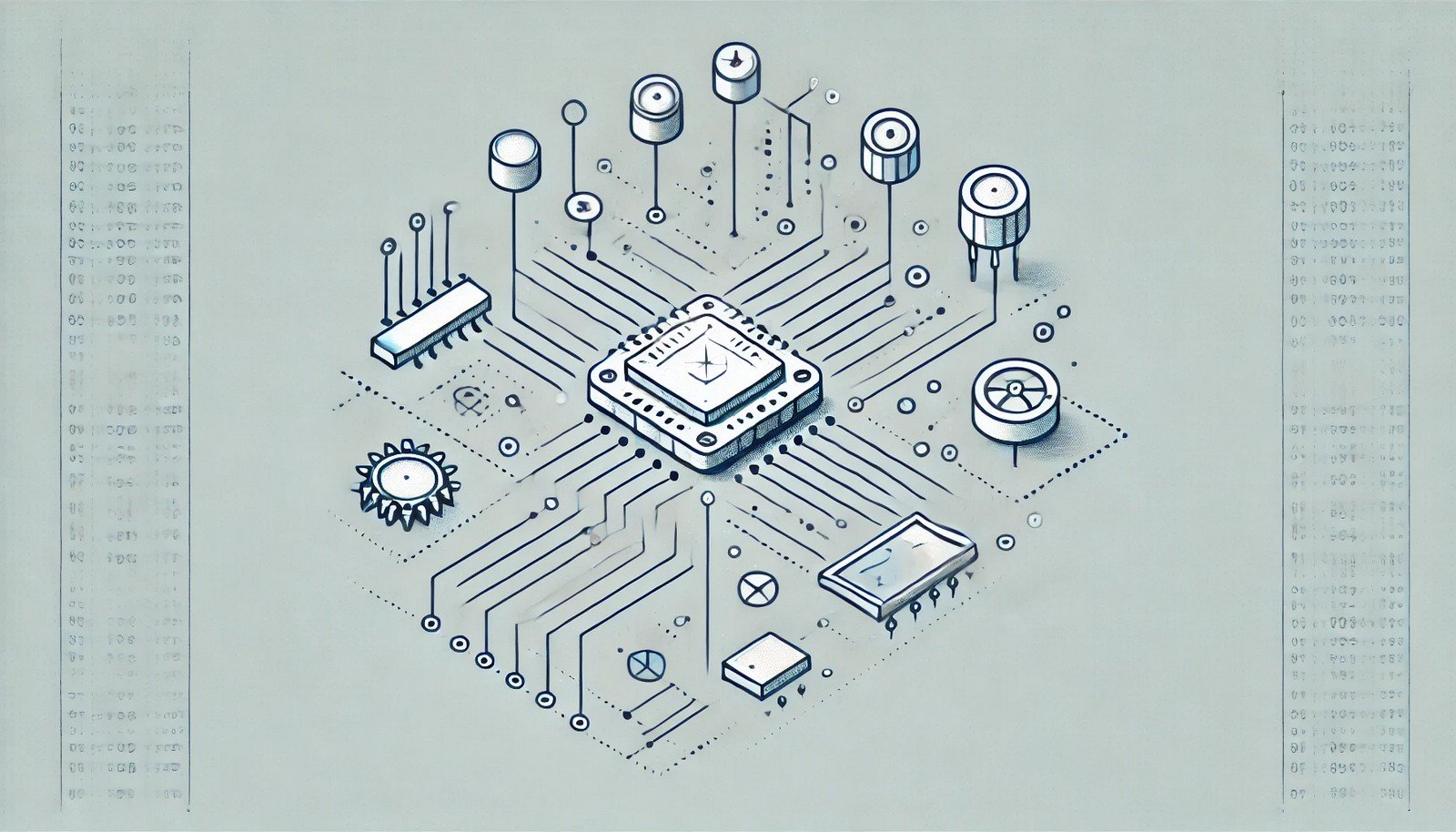Embedded Systems

(Representational Image | Source: Dall-E)
Quick Navigation:
- Embedded Systems Definition
- Embedded Systems Explained Easy
- Embedded Systems Origin
- Embedded Systems Etymology
- Embedded Systems Usage Trends
- Embedded Systems Usage
- Embedded Systems Examples in Context
- Embedded Systems FAQ
- Embedded Systems Related Words
Embedded Systems Definition
An embedded system is a specialized computing system designed to perform dedicated functions within a larger system. Unlike general-purpose computers, embedded systems are optimized for efficiency, reliability, and real-time processing. These systems typically include a microcontroller or microprocessor, memory, input/output interfaces, and specific software that controls their operation. Common applications of embedded systems include automotive control units, medical devices, industrial automation, consumer electronics, and IoT (Internet of Things) devices.
Embedded Systems Explained Easy
Think of an embedded system like a tiny, invisible brain inside your gadgets! Imagine your washing machine – it knows how long to wash clothes, what buttons you press, and when to stop. That’s because there’s a small computer inside, called an embedded system, that helps it do its job perfectly every time. You’ll find these tiny computers in things like your TV remote, microwave, and even traffic lights!
Embedded Systems Origin
The concept of embedded systems dates back to the 1960s with the development of the Apollo Guidance Computer used in NASA's lunar missions. The evolution of microprocessors in the 1970s, notably with Intel's release of the 4004, paved the way for the widespread adoption of embedded systems across various industries.
Embedded Systems Etymology
The term “embedded” comes from the idea of something being "fixed firmly inside" another object. In the context of computing, it refers to a computing system embedded within a larger device to control its functions.
Embedded Systems Usage Trends
The use of embedded systems has grown exponentially with the rise of automation, smart technology, and IoT. Modern industries such as healthcare, automotive, and consumer electronics rely heavily on embedded computing for efficiency and intelligence. As AI and machine learning integrate with embedded systems, applications are expanding into robotics, autonomous vehicles, and wearable technology.
Embedded Systems Usage
- Formal/Technical Tagging:
- Real-Time Systems
- Microcontroller Programming
- Embedded Software Development - Typical Collocations:
- "Embedded system design"
- "Real-time embedded systems"
- "Microcontroller-based embedded applications"
- "Low-power embedded computing"
Embedded Systems Examples in Context
- The engine control unit (ECU) in a car uses an embedded system to optimize fuel efficiency and engine performance.
- A pacemaker is an embedded system that monitors and regulates a patient’s heartbeat.
- Smart home devices, like thermostats and security cameras, contain embedded systems that enable automation and remote access.
Embedded Systems FAQ
- What is an embedded system?
An embedded system is a dedicated computing system integrated into a larger device to perform specific functions. - How is an embedded system different from a general-purpose computer?
Unlike general-purpose computers, embedded systems are designed for specific tasks and operate with limited hardware and software resources. - What are some common examples of embedded systems?
Examples include washing machines, ATMs, smartphones, industrial robots, and medical devices like insulin pumps. - What are the key components of an embedded system?
Typically, an embedded system consists of a microcontroller/microprocessor, memory, input/output interfaces, and dedicated software. - What programming languages are used for embedded systems?
Common programming languages include C, C++, Python, and Assembly, depending on the system’s complexity. - What industries use embedded systems?
Embedded systems are found in automotive, healthcare, consumer electronics, telecommunications, and industrial automation. - What are real-time embedded systems?
These are embedded systems designed to process inputs and provide outputs within strict time constraints, such as in aviation or medical devices. - Are embedded systems part of IoT?
Yes, embedded systems play a crucial role in IoT by enabling smart devices to collect and process data. - How do embedded systems contribute to AI applications?
AI-powered embedded systems enable autonomous decision-making, such as in self-driving cars and smart cameras. - What are the future trends in embedded systems?
Emerging trends include edge computing, AI integration, ultra-low-power processors, and security enhancements in embedded software.
Embedded Systems Related Words
- Categories/Topics:
- Internet of Things (IoT)
- Embedded Software Engineering
- Real-Time Computing
Did you know?
The first embedded system, created in the 1960s, was part of NASA’s Apollo spacecraft, guiding astronauts safely to the moon and back. Today, embedded systems power nearly every electronic device around us, from smartphones to autonomous robots!
PicDictionary.com is an online dictionary in pictures. If you have questions or suggestions, please reach out to us on WhatsApp or Twitter.Authors | Arjun Vishnu | @ArjunAndVishnu

I am Vishnu. I like AI, Linux, Single Board Computers, and Cloud Computing. I create the web & video content, and I also write for popular websites.
My younger brother, Arjun handles image & video editing. Together, we run a YouTube Channel that's focused on reviewing gadgets and explaining technology.



Comments powered by CComment